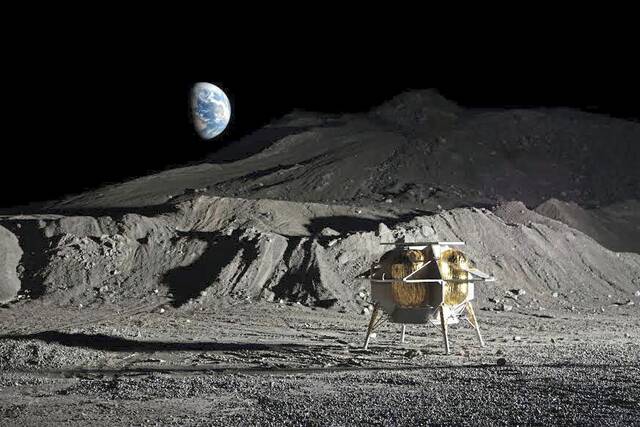https://triblive.com/business/pittsburghs-astrobotic-snags-nasa-contract-for-solar-array-as-it-shoots-again-for-moon-landing/
Pittsburgh's Astrobotic snags NASA contract for solar array as it shoots again for moon landing

A leaky valve in January 2024 may have scuttled a Pittsburgh-based space company’s mission to become the first private enterprise to complete a lunar landing.
But Astrobotic’s leaders made the most of its Peregrine mission despite the equipment failure.
“So, we had a day that wasn’t quite what we wanted. We learned a lot,” John Thornton, the company’s CEO, told TribLive on Tuesday. “We feel very good we’re not going to have a valve issue again.”
At 8 a.m. Tuesday, Astrobotic announced a new NASA contract to develop a 100-foot-tall solar array that could be used at both poles of the moon so there’s a reliable power source for extended manned solar missions.
Continuing our work for power infrastructure on the Moon with VSAT‑XL.???? This vertical solar array is designed to be 30m+ high to power assets at the lunar south pole.???? The Moon doesn't have weather as we experience it on Earth, so these colossal arrays won't tip over.… pic.twitter.com/mQnsYy1vRN— Astrobotic (@astrobotic) July 15, 2025
Later in the morning, Thornton attended the Pennsylvania Energy and Innovation Summit at Carnegie Mellon University, something he said was a fantastic spotlight for the city.
“I think it’s a great day for the city and a great day for Pennsylvania,” Thornton said.
Thornton gave U.S. Sen. David McCormick, R-Squirrel Hill, a hat tip for helping to spearhead the gathering of intelligentsia, where $90 billion in tech investments were announced. President Donald Trump and Democratic Pennsylvania Gov. Josh Shapiro also attended the gathering.
It wasn’t immediately clear if Astrobotic’s NASA contract, terms of which weren’t released, was part of that figure.
Thornton spoke to TribLive during a break in the summit. He also didn’t disclose a dollar amount. The company has been awarded more than $600 million in contracts, the bulk of which are from NASA.
“It’s part of a whole body of work we have,” involving solar arrays that could provide power during future lunar visits, Thornton said.
“If you can have power on the moon, you can survive the night,” Thornton said. “Having power at the poles (of the moon) is the biggest and most important infrastructure play beyond earth right now.”
Developing the solar array is the first step in a yearslong process to establish a lunar power grid, Thronton said.
It’s also only one of multiple space-related projects that Astrobotic’s 225 Pittsburgh-based employees are working on.
A date for the Griffin-1 mission isn’t set, but is supposed to launch this year in a planned trip to the lunar south pole. It will carry and deliver a rover developed by Astrolab, a Hawthorne, Calif.-based company that focuses on constructing rovers for space exploration.
NASA officials didn’t immediately respond to requests seeking comment.
Related:• Astrobotic will shoot for the moon again this year • Pittsburgh engineer played vital role in Astrobotic mission • Astrobotic finds silver lining in Peregrine mission
Copyright ©2025— Trib Total Media, LLC (TribLIVE.com)
